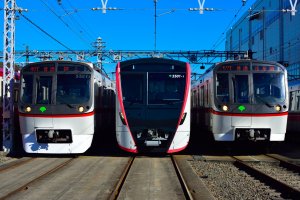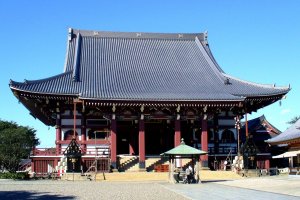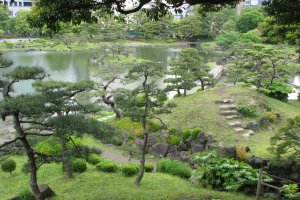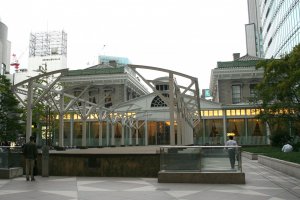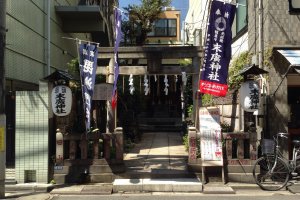Overview
The Toei Asakusa Line features twenty stations, running from Nishi-magome in the south, all the way to Oshiage in the north-east. The pink line may be Tokyo's most important through-service line since it links with numerous other lines. As a result, it is the only line that can allow a passenger to travel between Narita and Haneda airports without having to change trains. Here is a simple guide to the line's stations and places to visit along the way.
Nishi-magome, Magome, Nakanobu
Nishi-magome station is home to the fabulous Ikegami-honmonji Temple while Magome station takes you to the serene Yogyokuin Temple and its Buddhist sutra copying activity. Nakanobu station is a short walk to Matsu no Yu, a local Japanese public bath house.

Togoshi, Gotanda, Takanawadai
Togoshi station will take you to Togoshi Park, a former feudal lord property while Gotanda station, a major commercial district, is also home to the cherry blossoms of Gotanda Park, one of the 100 Scenic Spots of Shinagawa. Takanawadai station is close to the Hatakeyama Memorial Museum of Fine Art.

Sengakuji, Mita, Daimon
Sengakuji station gives access to the famous Sengakuji Temple of the 47 Ronin fame. Mita station provides immediate access to Mihokashima Shrine while Daimon station takes you to the stunningly beautiful Kyu-Shiba-Rikyu Gardens.

Shimbashi, Higashi-ginza, Takaracho
Shimbashi station is a couple of minutes from the Old Shimbashi Station, Higashi-ginza station provides direct access to the world famous Kabuki-za theatre while Takaracho station takes you to Gallery Kubota, home to many local paintings.

Nihombashi, Ningyocho, Higashi-nihombashi
Nihombashi station leads to Hakkaisan Nihonbashi, a sake select store and bar, Ningyocho station can take you to Shinto shrines like Suehiro and Kasama Inari while Higashi-nihombashi station offers access to Komiya Shoten, a specialist Japanese artisan umbrella store and Neko no Hikidashi, a cat-themed art gallery.

Asakusabashi, Kuramae, Asakusa
Asakusabashi station is home to the Lucite Gallery and Ichogaoka Hachiman Shrine. Kuramae station will take you to Kuramae Shrine while Asakusa station sits right by the famous Sumida River.

Honjo-azumabashi, Oshiage
Across the Sumida River lies Honjo-azumabashi station, offering access to the Tobacco and Salt Museum while, finally, Oshiage station, despite sitting right by Tokyo Skytree, is also home to Wanpaku Tengoku Park, a great children's park full of activities and jungle gym equipment.



